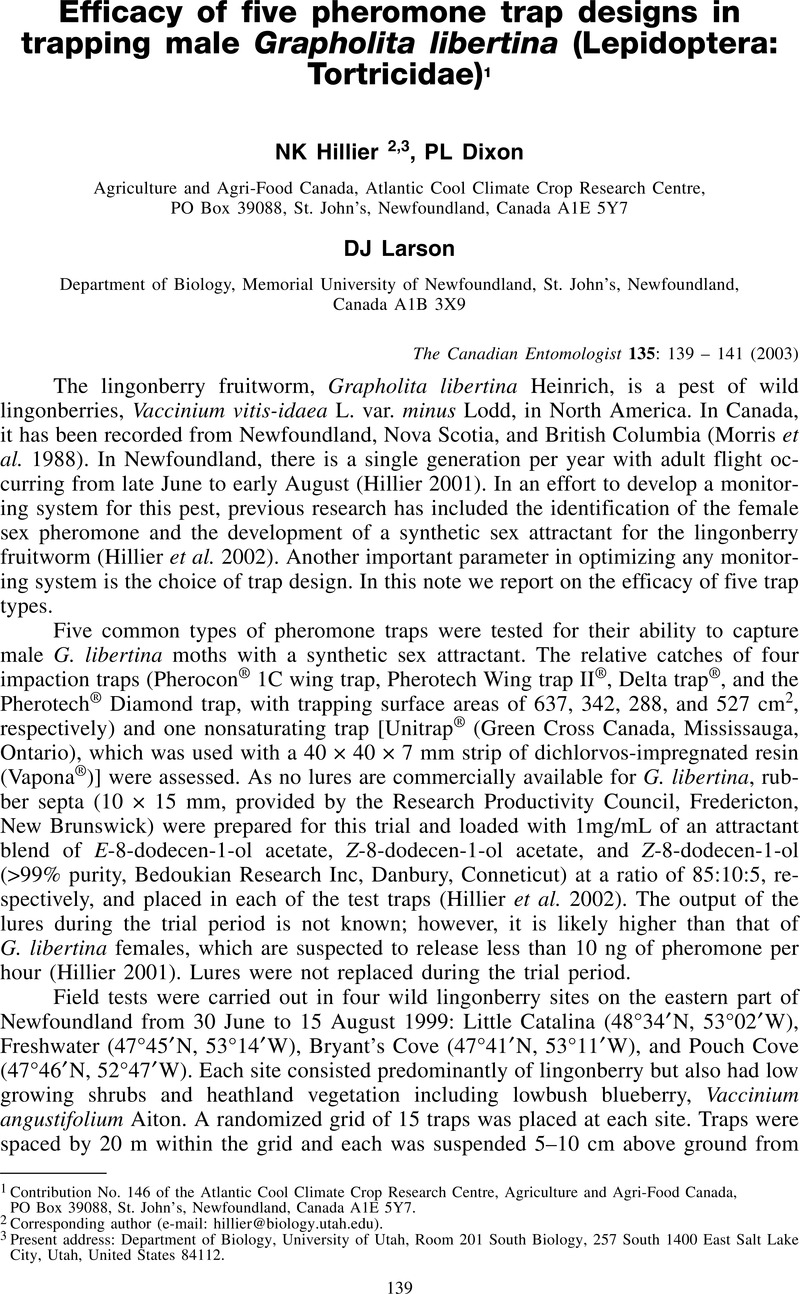Crossref Citations
This article has been cited by the following publications. This list is generated based on data provided by Crossref.
Goulet, H.
Hillier, N.K.
Dixon, P.L.
and
Larson, D.J.
2016.
Phanerotoma libertinecida (Hymenoptera: Braconidae), a new species of parasitoid of Grapholita libertina (Lepidoptera: Tortricidae) associated with lingonberry (Ericaceae).
The Canadian Entomologist,
Vol. 148,
Issue. 2,
p.
200.
Hussain, Altaf
Hladun, Shane
Vincent, Marc
Wist, Tyler J.
Hillier, N. Kirk
and
Mori, Boyd A.
2023.
Development of a pheromone monitoring system for the goosefoot groundling moth, Scrobipalpa atriplicella (von Röslerstamm) in quinoa, Chenopodium quinoa (Willdenow).
Crop Protection,
Vol. 165,
Issue. ,
p.
106166.



